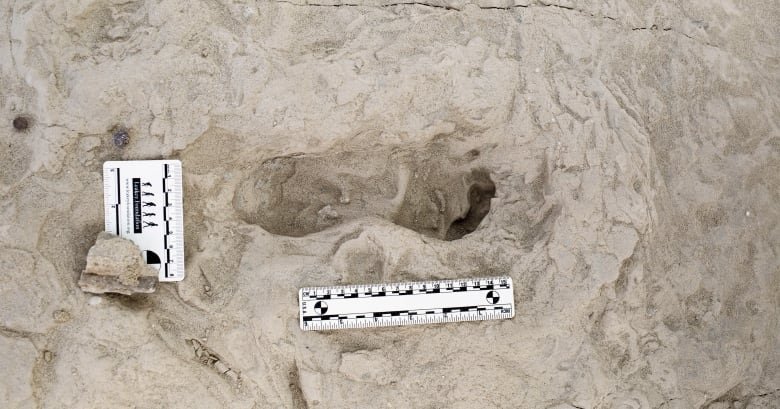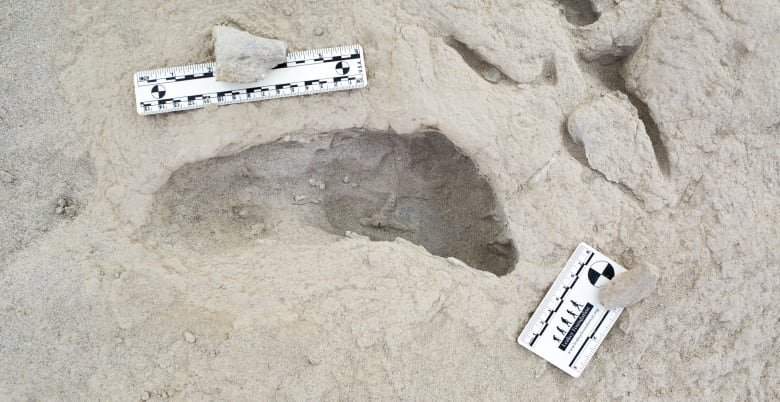Muddy footprints left on a Kenyan lakeside suggest two of our early human ancestors were nearby neighbours some 1.5 million years ago.
The footprints were left in the mud by two different species “within a matter of hours, or at most days,” said paleontologist Louise Leakey, co-author of the research published Thursday in the journal Science.
Scientists previously knew from fossil remains that these two extinct branches of the human evolutionary tree — called Homo erectus and Paranthropus boisei — lived about the same time in the Turkana Basin.
But dating fossils is not exact. “It’s plus or minus a few thousand years,” said paleontologist William Harcourt-Smith of Lehman College and the American Museum of Natural History in New York, who was not involved in the study.
Yet with fossil footprints, “there’s an actual moment in time preserved,” he said. “It’s an amazing discovery.”

The fossil footprints were uncovered in 2021 in what is today Koobi Fora, Kenya, said Leaky, who is based at New York’s Stony Brook University.
Whether the two individuals passed by the eastern side of Lake Turkana at the same time — or a day or two apart — they likely knew of each other’s existence, said study co-author Kevin Hatala, a paleoanthropologist at Chatham University in Pittsburgh.
“They probably saw each other, probably knew each other was there and probably influenced each other in some way,” he said.
Footprints show different gaits
Paranthropus boisei is a more distant relative of humans than Homo erectus, living from about 2.3 million to 1.2 million years ago. They reached around 137 centimetres in height, while H. erectus ranged from 145-185 centimetres tall. H. erectus had larger brains than P. boisei, and lived from about 1.89 million to 110,000 years ago.
Scientists were able to distinguish between the two species because of the shape of the footprints, which holds clues to the anatomy of the foot and how it’s being used.

H. erectus appeared to be walking similar to how modern humans walk — striking the ground heel first, then rolling weight over the ball of the foot and toes and pushing off again.
The other species, which was also walking upright, was moving “in a different way from anything else we’ve seen before, anywhere else,” said co-author Erin Marie Williams-Hatala, a human evolutionary anatomist at Chatham.
Among other details, the footprints suggest more mobility in their big toe, compared to H. erectus or modern humans, said Hatala. P. boisei also had a more flat-footed walk, similar to chimpanzees.
Our common primate ancestors probably had hands and feet adapted for grasping branches, but over time the feet of human ancestors evolved to enable walking upright, researchers say.
The new study adds to a growing body of research that implies this transformation to bipedalism— walking on two feet — didn’t happen at a single moment, in a single way.
Rather, there may have been a variety of ways that early humans learned to walk, run, stumble and slide on prehistoric muddy slopes.
“It turns out, there are different gait mechanics – different ways of being bipedal,” said Harcourt-Smith.


